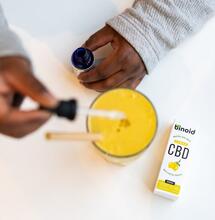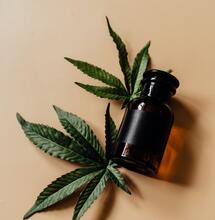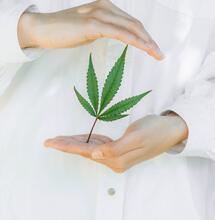The Potential of CBG

Some fascinating minor cannabinoids exist with unique potential, CBG being one of the most promising. Although found in minute quantities of less than 1% in many strains, CBG plays a significant role in the creation of the other cannabinoids that we are familiar with such as CBD and THC.
CBG or Cannabigerol, to give it its full name is the stem cell' of both CBD and THC. As the cannabis plant matures, CBGA breaks down and is converted into CBDA and THCA, the inactive forms of CBD and THC.
When heated or 'decarboxylated', the active ingredients become CBD, THC and a small quantity of CBG. THC is responsible for the 'high' effects of cannabis, whilst CBD and CBG support health without any 'high'.
CBG is fast becoming one of the most sought after cannabinoids in extractions. So far, research has shown that CBG has excellent potential for medicinal use.
CBG may effectively treat eye conditions such as glaucoma by reducing fluid pressure in the eye. CBG is thought to be a potent vasodilator. This medication can dilate blood vessels and allow blood to flow more freely and easy.
CBG may also have neuroprotective effects. In a 2015 study, it was shown to protect neurons in mice with Huntington's disease. A condition characterised by nerve cell degeneration in the brain. CBG was also found to be effective in decreasing inflammation in those suffering from inflammatory bowel disease.
CBG even looks like it could be promising in the fight against cancer. It has been shown to block receptors that cause cancer cell growth. In one study carried out on mice, CBG inhibited the growth of cancer cells associated with colon cancer.
European research has proven that CBG works as an effective antibacterial against MRSA, a microbial strain notoriously resistant to several kinds of modern drugs.
In 2017 researchers showed that a form of purified CBG acted as an excellent appetite stimulant in rats. This could prove potentially beneficial for the symptoms of muscle wastage and severe weight loss commonly seen in late-stage cancer and other diseases.
CBG fared well in testing as a possible remedy for easing or preventing bladder dysfunction disorders. As well as also being useful for general pain relief, common skin issues like psoriasis, and as an antidepressant.
One problem with CBG is the process of obtaining it. It is so expensive that it has earned itself the nickname of the "Rolls Royce of cannabinoids".
CBG is five times more expensive than CBD because of the volume of plant matter needed to extract small quantities of it. If the CBG content of a batch of cannabis is 1%, you would have to extract twenty times the amount of biomass to obtain the same CBG concentration.
CBG extraction is still relatively new and currently requires highly specialised expensive equipment. The only other way to make CBG more accessible and affordable is by creating plant strains rich in CBG, which is presently being explored by plant geneticists.
Early findings and research have produced encouraging results about the full scope of potential that CBG could have, and further research involving CBG alone and in combination with other cannabinoids continues.
For more information on minor cannabinoids, check out these articles on Delta-8-THC and THCV..















